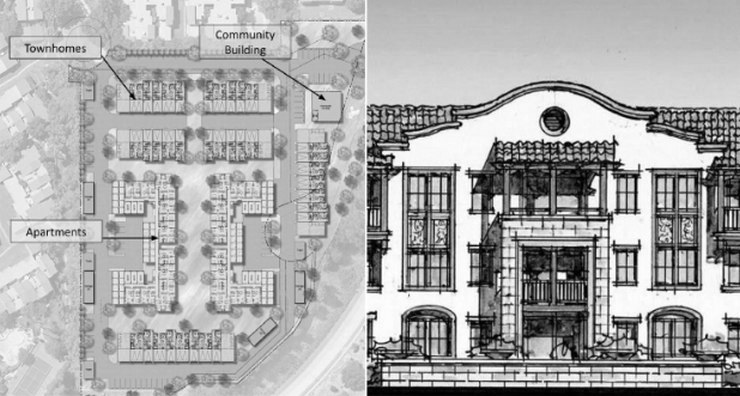
After three hours of presentations and rebuttals, eight letters, and emotional testimony for and against, Pasadena’s Historic Preservation Commission voted by a razor-thin margin in April to recommend landmark status for the former Roosevelt Elementary school. Buildings in Pasadena are routinely landmarked without controversy. What makes this case different? Pasadena Unified School District has an active plan to demolish the school and build housing for teachers and staff at the site. While the commission may have been sincere, by endorsing this last-ditch attempt to stop development, they exposed a process in need of serious reform. If the City Council upholds the decision, it will block 110 affordable homes and force a larger reckoning over the credibility of preservation in Pasadena.
Some context: Even before the Covid pandemic, Pasadena schools had been battered by a vicious cycle of falling enrollment and financial deficits, leading to the closure of Roosevelt, Jefferson, and Franklin elementary schools at the end of the 2019-20 school year. All of these were tragic for affected families and teachers, but Roosevelt Elementary’s closure had a particular sting because it was one of the older schools in California dedicated to the education of students with special needs and disabilities. Although it hosted some programs for a few years afterward, Roosevelt school went fully dark last year.
Faced with excess school land and a staff burdened by high rents and punishing commutes, Pasadena Unified began to explore Roosevelt as a site for workforce housing in 2021. But it’s not until 2024 that the first application to landmark Roosevelt based on its “contribution to the broad patterns of history” reaches the Historic Preservation Commission. This starts a year-long game of whack-a-mole, in which city staff denies the application, a commission member reopens it, the full commission declines to take it up, and then the application is resubmitted focusing on a different criterion for preservation. As this process plays out, the PUSD school board votes twice six to one to build housing at Roosevelt.
Even allowing these efforts, one to build housing and one to prevent it, to run simultaneously wastes city resources and adds costs and risk to development. This is especially damaging when the development is public, as the housing at Roosevelt Elementary would be, and taxpayer money is involved. It seems clear to me that a landmark application for the site of a planned development must be treated with stricter scrutiny. Otherwise, we invite motivated attempts to landmark buildings that don’t meet the standards of Pasadena’s authentic cultural treasures.
Additionally, the Historic Preservation Commission deliberations were disorganized and failed to make a strong case for landmark status according to their own standards. Some members showed their hands by criticizing the use of the site for housing. Up until the moment of the final vote, they disagreed with city staff and each other about which of their criteria they could legally consider. And while members spoke eloquently about Roosevelt’s history as an educational institution, they had already rejected a previous submission on that same basis. Instead, they were forced to consider its architectural value. Though the campus is a hodgepodge of structures built in the 50s, 70s, and 2000s by two skilled but not distinctive local architects, they voted to landmark the school anyway. The commission needed to “get to yes,” and that’s exactly what happened.
This decision might save Roosevelt’s campus, but will it save its history? Neither the applicant nor the commission had a vision for the use of a landmarked Roosevelt Elementary, so it would likely remain as it is today: closed. If we’re serious when we say a building should be preserved because of its history, we need a plan to teach it, including funds to maintain the space, enable public access, engage local museums and educators, or take the building into city ownership. Too often we entrust places we deem historic to owners who never asked to be their caretakers, so they’re left empty or used as halfhearted amenity spaces. Weaponizing the landmark process to block development doesn’t just harm our housing supply, it does a disservice to preservation.
I can’t imagine what students, parents, and teachers went through when Roosevelt Elementary closed. And I am not arguing that PUSD has been blameless; it’s clear that administrators failed to rebuild trust with parents in the wake of the closure. But preserving the school will not bring students back. There is a story to be told about Roosevelt—about students who overcame formidable obstacles to build lives of dignity and achievement, about teachers who moved heaven and earth to help them do it, and about a city that cared enough about them to support their education in an era when few others did. But that can’t be read on the walls of this campus. Let’s find ways to tell Roosevelt’s story while giving teachers, custodians, social workers, gardeners, and their families a chance to create stories of their own in Pasadena.
Michael Canavan is a renter, parent, and housing activist living in Pasadena














 0 comments
0 comments


